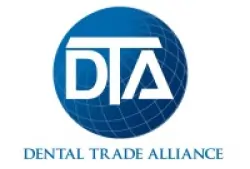
Login to Customer Portal
Enter your mobile number
Data Privacy & Security Guaranteed
Funding in 24 hours!

The US healthcare or medical practice industry constitutes distinct organizations and sectors
involving healthcare providers, hospital systems, insurance companies, and independent
healthcare providers.
Within the industry, healthcare services are provided to treat patients with remedial,
preventive, rehabilitative, and palliative care.
The U.S. healthcare facilities are mostly owned and operated by private sector companies.
The contemporary healthcare industry consists of various sectors and categories subject to
the interdisciplinary teams of trained and skilled professionals providing
healthcare to individuals and populations.
The U.S. healthcare system has been divided into different segments, such as – Hospitals,
Nursing and residential care facilities, Physician’s offices, Dentist’s offices, Home
health care, Health practitioners, Outpatient care centers, Ambulatory Services, and
Medical and Diagnostic laboratories.
The healthcare spending in the United States reached $4.1 trillion. The industry’s
spending accounted for 19.7 percent as a share of the country’s Gross Domestic
Product.
According to the U.S. Bureau of Labor Statistics, the projected employment growth in
the healthcare occupations is 16%
from 2020 to 2030 because of the aging population in the country with increased
medical attention. The occupation related to healthcare support (home health aides, etc.)
resulted in a median annual wage of $29,960.
The U.S. Census Bureau’s County Business Patterns (CBP) reports that more than nine
million businesses in the healthcare and social assistance sector outpaced all other
sectors, with more than $1.0 trillion in annual
payroll.
The U.S. healthcare industry is facing some problems like labor shortages, worker burnout,
cybercrime surge, and changes in the delivery of health care.
However, the industry is also embracing new approaches to risk management, with confidence
to turn 2022 into a year of opportunity.
The industry players are set to work toward better assisting patients, doctors, and nursing
staff.
In the following sections, we are discussing the existential status of the healthcare
industry in the U.S.
The Healthcare industry is perhaps the only industry in current circumstances that needs
“Help Wanted” sign.
The industry’s nursing section is facing an acute shortage of labor, say 84% of hospitals
identify that the nursing shortage is quite challenging in tackling a health crisis like the
pandemic.
Moreover, senior care is also struggling, with 94% of nursing homes and 81% of
assisted living facilities having reported employee shortages. The labor markets are also
expected to squeeze even further followed by vaccine hesitancy among healthcare workers, as
many vaccine mandates are being enforced.
Cybercrimes like ransomware keep surging and are expected to be more seriously damaging the
healthcare industry in the long run.
The ransomware companies are said to attribute nearly half of all the cybercrimes against
healthcare providers.
Data analytics has become quite instrumental in helping the life sciences industry to
understand genetics and disease. The data helps them how to figure out patterns in clinical
trial study results to improve the drug development and manufacturing process.
Medical professionals leverage machine learning algorithms to understand the behavior of
certain drugs. Besides, the technique is used in predictive medicine to do AI-based analysis
of tests and medical records, and track the effects of various therapies on groups of
patients over time.
The history of healthcare in the United States doesn’t bear much similarity with that of most
other first-world nations. No doubt the Civil War in the country prompted the progress of
the country’s medicine faster, resulting in a more unique healthcare system now evolving
into something that country’s citizens find both lovable and unsatisfactory.
Well, no matter whichever perspective you tend to lean toward, it is no brainer to
understand that the history of U.S. medicine and organized healthcare has a long winding
road. Let’s dive into how we’ve gotten up to this far today.
During colonial times in the 1700s, medicine remained at a nascent stage for the first few
generations of colonists. The role of women in attending health care, especially when it
came to childbirth, was significant in those times. There were higher mortality rates of
infants and young ones due to malaria, diphtheria, and yellow fever. Traditional medicines
were used to treat sick persons. Public health had almost no government regulation in those
early days.
The Medical College of Philadelphia was founded in 1765. Later, in 1770, the medical
department of King's College was founded in New York.
During the Civil war, the situation of healthcare was precarious. More soldiers lost their
lives to diseases than from fighting in the war. The status-quo of the Confederate States
of America suffered from the severe lack of medical supplies and physicians. Soon,
the epidemics of childhood diseases like measles, chickenpox, etc. broke out due to the
absence of hygiene and overcrowded quarters, ravaging the human population. Eventually,
progress was made in the form of care facilities, surgical techniques, and nursing methods.
Every state got its army hospitals.
Many agencies related to health were set up, raising awareness of the public toward
healthcare. Both the federal government and states started to invest in healthcare. The
American Medical Association (founded in 1849) started to be popular with its growing counts
of membership accounting for about half the physicians in the United States.
The presidency of Theodore Roosevelt (1901-1909) brought forth the rising importance of
stronger health care in the country as he himself believed in the significance of health
insurance. The country’s industrial revolution kept rolling on and with it came more and
more workplace injuries due to strenuous activities and heavy machinery at manufacturing
jobs during the industrial revolution in the U.S.
To tackle health-related issues of workers effectively, companies started to roll out
various forms of sickness protection. One among such companies that introduced healthcare
for the US workers was the American
Association of Labor Legislation (AALL). It was an early advocacy group for
national health insurance founded to study the labor condition and labor legislation in the
U.S. It drafted the legislation in favor of working-class and low-income citizens but it was
taken down under fierce opposition by some medical societies. This was the era when another
group called the Progressive Party was pitching for the idea of national health service and
public healthcare for the disabled, elderly, and jobless.
After world war 1, the cost of healthcare in America became a burning issue, given healthcare
institutions and doctors started to charge beyond the affordability of average citizens.
Later, Dallas-based Baylor Hospitals came up with a unique program to support teachers with
a pre-paid healthcare monthly fee.
The popularity of the program went across the nation, resulting ina Blue Cross
Blue Shield Association.
The Great Depression of the 1930s intensified the debate of healthcare, especially for the
elderly and the jobless. Despite Blue Cross and Blue Shield rolling on across the United
States, President Franklin Delano Roosevelt, realizing the gravity of healthcare
issues in the country, got to work on a health insurance bill that included the “elderly”
benefits, something very sought-after at the time.
Later, the Social Security Act of 1935 brought forth unique public health support for the
retired and elderly, allowing states to make available provisions for the needy who were
either jobless or disabled (or both). This was a time when a leading industrialist by the
name of Henry Kaiser, with the help of Dr. Sidney Garfield, introduced pre-paid healthcare
to 6,500 of his employees at the Grand Coulee Dam. The program was a big hit for the workers
and their families.
The
Wagner-Murray-Dingell Bill was introduced in 1945 but could not be passed due to
intense opposition. However, the attempt was quite distinct based on its effort for health
care reform in the U.S. The president, John F. Kennedy (1961-1963) also worked on a
healthcare plan for senior citizens and tried to push Congress to pass the bill but it
failed followed by the intense opposition from AMA. In the 1990s, president, Bill Clinton
(1993-2001), proposed the
Health Security Act of 1993, after he saw that the rapid healthcare expenses would
be damaging the average citizens in America.
The provisions included universal coverage and a basic benefits package, along with health
insurance reform, and other benefits.
In 1996, Clinton signed the
Health Insurance Portability and Accountability Act of 1996 (HIPAA). The HIPAA
brought forth a modernistic flow of healthcare information and privacy standards for people.
The Clinton Administrator also brought forth the Children's
Health Insurance Program (CHIP).
It provides matching fund payments to states for health insurance to families with
uninsured children and incomes far too low to qualify for Medicaid. Later, under the
presidency of Barack Obama (2009-2017), the Affordable Care Act
(ACA), colloquially known as Obamacare, was introduced, representing the country’s most
significant healthcare systems regulatory overhaul and expansion of coverage.
One of the most notable features of the ACA was its pre-existing condition clause.

In this section, we are going to highlight some important updates or trends taking place in
the healthcare industry and how they are going to be for the industry in the long run.
The healthcare trend in the United States is now shifted toward value-based care, since the
enactment of the Affordable Care Act
on March 23, 2010. It introduced a dramatic change to the way health providers would be
paid, such as the number of patients they saw and the number of tests they performed, along
with other fee-based mechanisms.
The Obamacare methodology is patient-driven which is essentially considered to push the
healthcare toward more value-oriented care to the patients and help healthcare providers
receive fees based on favorable patient outcomes. This sort of value-based approach, coupled
with one-year renewal schedules for physicians’ contacts will focus more on quality over
quantity.
To streamline the care delivery process in the healthcare industry, successful supply chains
play an integral role in terms of increasing storage and self-distribution, cultivating
deeper relationships with backup suppliers, having in place new supply chain models for new
care settings, and involving more automation software and artificial intelligence to
streamline supply chains with predictive information.
Cooperative competition, or “coopetition”, is one of the key trends catching up in the
healthcare industry these days.
It is seen as a viable strategy among nationwide pharmaceutical chains and healthcare
organizations to be able to provide lower cost of care, increase downstream market capture,
and offer core specialty services while staying connected with the patients.
The trend of coopetition strategy also focuses on expanding the healthcare market while
making community health better by allowing new entrants to be force multipliers and cashing
in on opportunities where health acres could significantly impact community health and
partner intentionally.
Just as companies in the past became tech companies, in light of data and computing becoming
more powerful, similarly companies are now learning to become healthcare companies as
protecting employees and customers is one of the top priorities for doing business. This
means including enhanced biosecurity measures, from on-premises screening technology to
sanitization stations and quarantine measures at locations requiring the physical presence
of staff.
The technology-driven innovation around healthcare systems will introduce more advanced
safety measures and early detection of health threats to rule out the possibility of the
contagious disease being passed around.
While some companies deem it prudent to allow their employees to remain remote, supporting
the mental health of workers who juggle home and work responsibilities will be another
challenge for the companies.
In this context, technological innovations like health apps, meditation, and mindfulness
apps will play their part in mitigating these types of challenges.
In this section, we are highlighting the importance of healthcare franchises and
opportunities for business persons or entrepreneurs.
Franchising has provided the healthcare industry with a great growth prospect.
With options in the franchising segment like assisting living facilities, causality, medical
billing services, mobility equipment used by patients, therapies, etc. the sector portrays
great employment opportunities and growth prospects in the healthcare segment.
Moreover, a healthcare franchise can be a good start for a new entrepreneur to allow a more
successful entrance to the market with the help of larger resources, knowledge, and support
a franchise.
The first rule of thumb in choosing a business franchise in healthcare is choosing a
business offering long-term growth. Moreover, it is very important to understand that
employees working in healthcare must be properly educated, trained, and certified to ensure
that the business complies with the local, state, or federal laws.
We are listing some healthcare franchises below to help you choose the right franchise best
suited to your interests.

The
National Council for Mental Wellbeing was founded in 1969. It’s a membership
organization representing about 3,500 mental health and substance use treatment
organizations and over 10 million children, adults, and families they serve.
Basically, the association drives social change and policy for these organizations to ensure
that high-quality services are equitably accessible. The organization lends more focus on
promoting the significance of mental wellbeing as a core component of comprehensive health
and health care.

Advanced Medical Technology
Association is a Washington-based U.S. medical device trade association. Its
involvement in advancing medical technology is to achieve healthier lives and economics
around the world.
The member companies of the association have a global presence and range from the largest to
the smallest medical technology innovators and companies. It advocates companies that
produce medical devices, digital health technologies, and diagnostic products.

National Association for Psychiatric
Health Systems was established to represent behavioral healthcare. It gives
representation to the provider systems engaged in the delivery of clinically effective and
responsive prevention, treatment, and care for children, adolescents, adults, and older
adults affected with mental and substance use disorders.
The American Association for Health Education was established as a membership organization
that advocates 5,500 health educators and health promotion specialists.
It is the oldest and largest health education association with members representing every
level of academia and practitioners in all corners of society.
The association’s mission is to assist health educators and other professionals striving to
promote the health of all people.

Dental Trade Alliance (DTA)
was founded as a trade association of distributors, service providers, and manufacturers of
the oral health industry driven by a common purpose of enhancing the status of oral care.
This is a member-supported trade associated representing businesses all across North America
and provides the resources and knowledge-sharing opportunities. The association is driven by
its mission of succeeding its members and the industry at large.

Alan B. Miller is a renowned business in America. He founded Universal Health
Services in 1979 and led it to become America’s one of the largest healthcare
corporations, with annual revenues of more than $11.37 billion . Miller was born on
August 17, 1937, in Brooklyn, New York City. A graduate from the College of William and
Mary, Miller’s first foray into the professional field was with Young & Rubicam, a
NY-based advertising industry where he learned about entrepreneurship.
Miller, with his former Wharton roommate, set up a new venture called American
Medicorp. The purpose of the new venture was to build privately-owned hospitals in
America’s high-growth areas, such as California. Eventually, Miller's partner left
the company followed by financial trouble in the company.
Miller, now as a CEO of American Medicorp, put considerable efforts in uplifting the company
from the financial swamp and engineered such a turnaround that he brought the company to the
spotlights within the healthcare industry.
Unfortunately, he lost the company to a hostile takeover by Humana, a health
insurance company, in 1978.
However, that incident didn’t dampen his relentless spirit of achieving success against the
odds.
Miller set up a new venture by the name of Universal Health Services, Inc. (UHS). To
make this new venture successful, Miller applied the same formula for success that he tried
in rebuilding American Medicorp. His application of the success formula bore fruit, as UHS
was transformed from a start-up venture with six employees and zero revenue to a Fortune 500
company. Today, it is America’s one of the largest healthcare corporations, with a workforce
strength of over 90,0000 and commercial values of over $11.4 billion.
Miller is the recipient of the Lifetime Achievement Award from the Federation of
American Hospitals. He received the FAHS Award for leadership in 1978. Financial
World magazine featured him among the Outstanding 1000 CEOs in 1995 and
1996.
The healthcare business financing or medical practice loans are good options for doctors,
dentists, or other healthcare professionals who want to open their own medical
practice.
In fact, the joy of being your own boss is quite boundless. In due course of time, you end
up developing a trusted relationship with your patients by helping them and their families
to live a better, healthy life.
With healthcare business loans, you own your own practice and determine how many patients
you see by adjusting your operating hours, or see patients occasionally on weekends to just
make sure your medical practice keeps growing.
While owning a medical practice may sound like a sound business idea, it also comes with
certain downsides, or say you have to shoulder all of the risks associated with it.
One of the biggest challenges you may face in this regard is experiencing large financial
costs, say around $100,000 to simply open your doors for the first time. After your business
is up and running, the expenses keep growing up accordingly, depending on the size of the
practice.
This is why medical practice loans sound like a good resort to handle such challenges in a
new and existing medical service business.
To qualify for healthcare business loans typically depends on the health of an individual’s
medical practice and its creditworthiness.
Medical practice lenders today constitute a wide pool of financial institutions, banks, and
private investors. While you may not be privy to the exact origin of your loan amounts, you
will get the assurance that the source of the funds is trustworthy.
In this section, we are sharing some useful information about some top medical practice loans
to narrow down your research for the best loan product that makes sense for your healthcare
business.
The mission of Small Business
Administration (SBA) Loans is to assist small business companies and entrepreneurs
across the U.S. and address their business concerns, along with boosting the overall economy
of the country.
The SBA 7(a) financing is one of the most popular loan products due to its use-case
flexibility, great terms, and sizeable funds at the lowest interest rates and longest
repayment terms. Under this loan program of SBA, one can receive up to $5 million for their
business needs.
Acquiring SBA 7(a) loans is competitive, given strident eligibility criteria, one of them
being a strong borrowing background and steady finances of the borrower. This explains why
doctors are usually strong candidates for SBA 7(a) loans. The SBA loan timeline can extend
up to weeks or even months.
It involves a great deal of paperwork, especially for borrowers lacking organized financial
records. For this reason, the SBA loan is not an ideal recommendation to doctors or medical
practitioners who are looking for quick finance.
Traditional bank loans could be a great financing option if you are a qualified borrower.
Some banks like U.S. Bank and Wells Fargo can even offer you loan products specifically
designated for medical practice financing. They offer loans tailored to health care
practitioners.
When it comes to receiving loans from traditional lenders, borrowers are supposed to be
highly creditworthy with excellent financial pasts. In most cases, approval is not
guaranteed, even though you stand qualified for their specialized loan products. And if the
loan is approved anyhow, it will take a few months before you obtain the funds.
On a positive note, these types of loans are relatively inexpensive and can be taken even
though you have a poor credit history and student loan debts.
Fund your business expenses, address unforeseeable emergencies, or buy equipment. The loan
you get has a fixed credit limit, allowing you to make multiple draws as needed within the
credit limit.
These types of financing options have flexibility and cost-effectiveness. They are one of
the best medical practice loans for doctors and specialists with fluctuating
expenses.
Equipment financing is a viable financial solution to purchase specific equipment for the
medical practice businesses. The equipment you purchase through the loan will be used as
collateral for the loan itself. This means no down payment or collateral to your lender.
It allows you to break down the cost of expensive equipment into a supportable payment
option that you can manage.
You can also go for options like short-term loans, and term loans for your
medical practice. Under term loans, you will be loaned a lump sum amount that requires
repayment over time, including interest, for a set term.
On the other hand, short-term loans will get you fast financing but are very expensive due
to higher interest rates and shorter repayment terms.
Because of problems related to acquiring medical practice loans from lenders with strict
eligibility criteria, most borrowers turn to alternative lenders, someone with
relatively more flexible lending criteria.
In regard to medical practice business loans, Funderial has been an excellent resource for
lending. Since 2010, this BBB Accredited Business remains a leader in the lending market
assisting over $1 billion dollars in lending to small to midsize businesses providing them
with flexible lending /repayment options specific to their needs.
For healthcare businesses to run successfully, timely financial assistance is one of the most
important things to manage cash flow, cover daily operational expenses, including but
limited to equipment expenses, together with new equipment upgrades, maintaining older
equipment, acquiring a new practice, expanding a current business, handling
marketing/advertising costs, managing payroll, etc.,
This is where loan companies like Funderial come into the picture, extending a broad
variety of loan options for small and medium-sized businesses, at attractive terms through
in-house financing models, as well as the offer of trusted lending partners across the
United States.
To help you operate your business and maintain its sustainable growth, we have a host of
unique financing options at affordable rates and easy terms, with instant approval timespan,
and quick turnaround funding.